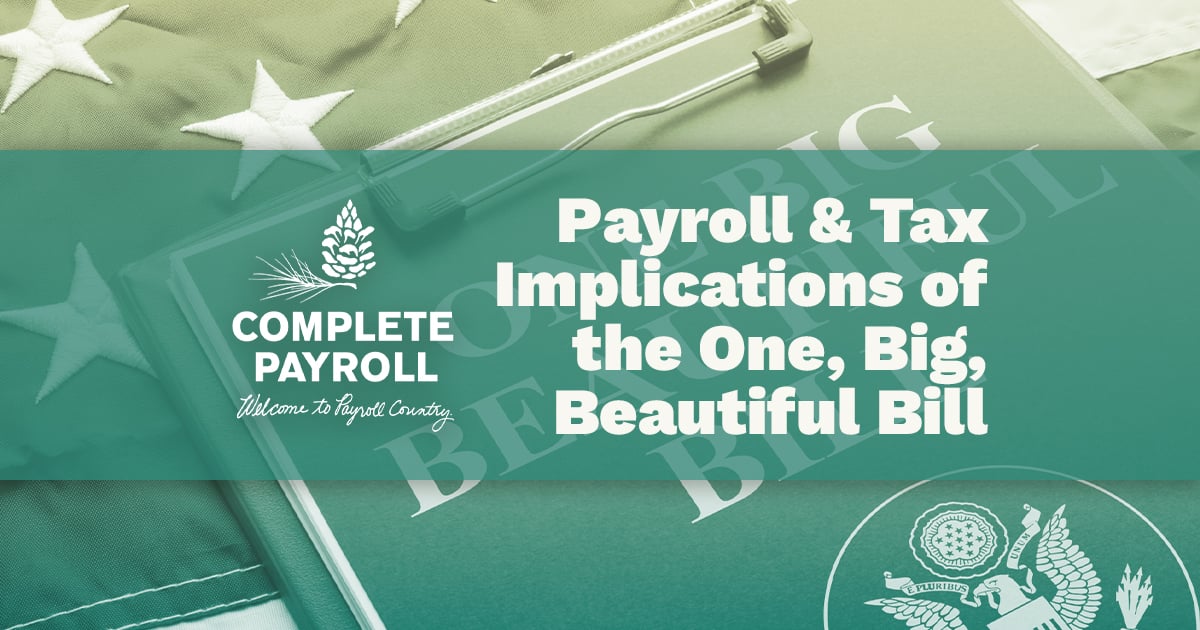Beginning July 1, 2024, the annual salary-level threshold for overtime will undergo a series of increases due to a final rule passed by the Wage and Hour Division (WHD) of the U.S. Department of Labor (DOL).
The rule will increase the Fair Labor Standards Act's (FLSA's) annual overtime salary threshold in two stages. On July 1, 2024, the current annual salary-level threshold will increase from $35,568 to $43,888. Then, on January 1, 2025, the threshold will increase to $58,656.
After that, the threshold will increase every three years, beginning on July 1, 2027.
What Does the New Overtime Threshold Mean for Employers?
This new FLSA overtime rule means that if you have salaried employees earning below the threshold and working more than 40 hours a week, you as an employer are required to pay them an overtime rate of time and a half per overtime hour worked.
It does not mean that employers are mandated to raise the salaries of their eligible employees.
It is also important to remember that if you are in a state where the overtime salary thresholds are higher than the updated thresholds from the DOL, you must adhere to whichever is more beneficial to the employee. For example, NY state and NYC are currently both higher than the new DOL thresholds, and it is likely that those will increase January 1, 2025 as well.
Reactions to the Overtime Threshold Increases
The Society for Human Resources Management (SHRM) stated in its public comment that it supports “regular and reasonable increases/updates to the salary threshold,” but is opposed to automatic increases.
“We appreciate the WHD’s desire to create a mechanism to help ensure the salary level remains a meaningful test to screen out clearly nonexempt employees and agree that WHD can and should review the salary level periodically. However, this should not come at the expense of providing the regulated community the opportunity to receive notice and comment. Furthermore, the Division should not ignore or limit its opportunity to evaluate the evolving economic landscape and conditions.”
Read SHRM’s Full Public Comment here.
What is the Reason for the Overtime Threshold Changes?
The Department of Labor said in a recent news release that the purpose of this final rule is to provide overtime protection for “lower-paid salaried workers." The objective of this new employee overtime threshold is for more employees to qualify for overtime pay.
This ruling raises the minimum salary threshold for EAP exempt employees, making all bona fide executive, administrative, and professional employees eligible for overtime exemption if their salaries meet the new threshold. This is called the “white collar” exemption.
In a recent statement, Emily Dickens, Chief of staff at SHRM said “Although SHRM and its membership support reasonable increases to the EAP salary threshold that reflect the modern economy, the nearly 65 percent increase from the current level may not be in line with local wage rates for employees holding administrative, professional, and executive positions in some areas of the country."
“For this reason, SHRM advocated for a more nuanced, geographically tailored approach to any increase in the EAP salary threshold,” Dickens added.
What Do Employers Need to Do to Stay Compliant?
The major decision employers will face is whether or not to raise the salaries of certain employees who are near or above the overtime salary threshold. For some employers, it may be better to raise the employee’s salary to ensure they are exempt from this new rule rather than pay out expensive overtime wages. Essentially, businesses will have to weigh the costs of both options to determine which is better for them and their employees.
Whichever way employers decide to go, they should carefully and clearly communicate to their employees the new employee overtime threshold and whether they are now exempt or nonexempt from this new overtime threshold.
Another impact on employers is the potential need to adjust their operations around this new rule. Employers may find themselves adjusting schedules, operations, and restructuring employee work loads to try and manage these increased labor costs. Until this new rule is implemented, employers will have plenty of time to restructure employee hours to avoid paying overtime.
It’s essential that employers are compliant with these new rules and the timelines. To help this transition, it’s recommended for employers to use reliable and efficient payroll management software to manage the new payroll changes, such as salary increases and overtime payments. Having strong payroll software will make it easier for payroll administrators to navigate these wage changes and ensure payroll compliance.
To ensure that your business is in full compliance, it’s a good idea to engage in consulting services with a professional who can give your business added guidance to make sure your business is aligned with these new overtime rules.
Employers and HR managers should meet with employees and clearly communicate the new employee overtime threshold and any upcoming changes to an affected employee to avoid any miscommunication. Employers must clearly communicate all changes and updates in an employee’s status, salary, and overtime compensation before the changes take place.
Adapting to New Overtime Regulations
It’s crucial for employers to fully understand this new overtime eligibility and salary threshold and make the necessary changes to ensure they’re legally compliant with these new rules within the correct time frame. Employers should stay up-to-date on this FLSA rule as well as consider their own local wage and labor laws.
Remember, employers must either increase the salaries of eligible employees or prepare to pay overtime compensation for employees who fall under the new salary threshold. Employers should start to prepare for this change now to ensure a smooth change of operations, payroll management, restructuring schedules, and effective communication with affected employees.
To stay up-to-date on all new payroll legislation, subscribe to Complete Payroll’s newsletter for the latest updates.
















 Get Instant Blog Notifications
Get Instant Blog Notifications

